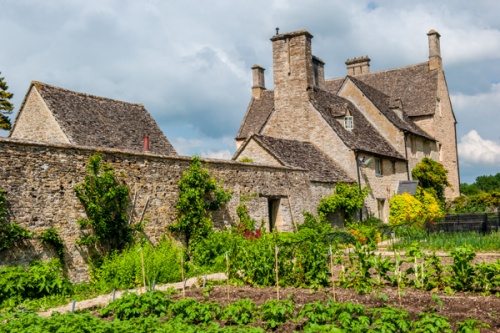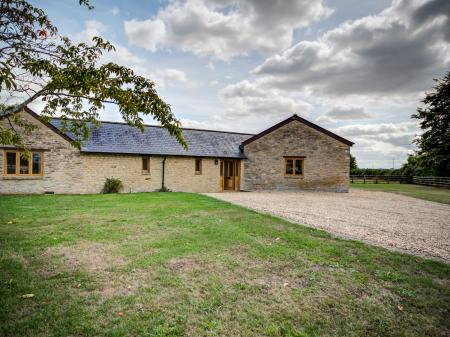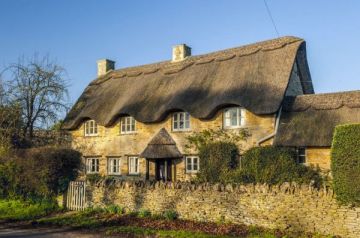
History
The manor house at Cogges was probably begun around 1240 by the de Grey family. The earliest part of the current manor building is the central section of the south face, where you can see pointed medieval windows in Gothic style.
The largest and tallest section of the manor is the east side, rebuilt between 1675 and 1700 by the Blake family and featuring very tall chimneys of Taynton stone.
Beside the house is a large walled garden, created over a period of several centuries from 1600. Beyond the walled garden is an orchard, producing heritage varieties of fruit.
The orchard may stand on top of the lost medieval village of Cogges, or perhaps the village stood in the field beyond, where you can clearly make out odd humps and bumps that may be ditches and pathways between buildings. The medieval settlement at Cogges went into a decline around 1200 as the thriving town of Witney grew up across the River Windrush.

Verging on the orchard is a large area bounded by ditches, now overgrown and clogged with debris. These ditches may be moats surrounding the original castle of Cogges, built by the Arsic family around 1100. The castle was occupied until around 1330 when the new and more comfortable manor house was built. Now nothing can be seen of the castle itself beyond the moat ditches.
Just beyond the castle moat and bounded on one side by the Windrush is an intriguing field with very noticeable ditches and earthwork banks. It is thought that this field was once medieval fish ponds, or perhaps an area for drying flax. Looking at the wide ditches it is hard to imagine it as a viable series of fish ponds, so perhaps flax 'retting' is a viable theory.

Just over the wall from the orchard area is the 12th-century church of St Mary, with an odd octagonal tower, and nearby is the vicarage, which contains a hall built around 1250 for a local abbey.
The interior of the manor house itself makes for an intriguing visit. Though many parts of the building date to the 17th century or earlier, it has been restored to the way it might have looked around the year 1800. There is a parlour, dining room, pantry with an attached cold room, and two kitchens, with a cross-passage leading to a cobbled courtyard and dairy.

Upstairs (not always open to the public) is the late 17th-century study of William Blake (not to be confused with the poet of the same name!). This Blake was a wealthy wool merchant who came to Cogges in 1675 and rose to become High Sheriff of Oxfordshire in 1689.
When Blake died in 1695 a detailed inventory of the house and its contents were made, and this inventory provides a valuable resource for restoring the upstairs rooms to their original condition. Also upstairs is a Victorian schoolroom and guest bedroom, a nursery, and a maid's room.

Visiting
I was very impressed by Cogges; though it bills itself as a farm museum, it is much more. I would call it an example of living history, a combination of museum, garden, and activity centre. A lot of the focus is on giving children and families a hands-on experience of local history, but children can also help feed farm animals, or even help work in the historic gardens.
There is a small shop selling produce grown in the gardens, and restored stables and farm buildings to help give an idea of how a small manor might have operated over the centuries. The sense of age and history at Cogges is almost palpable; it feels as if the jumble of manor house and farm buildings have grown organically.
If you have the time, park in Witney and take the signposted walk across the River Windrush and over water meadows to Cogges. It should take only about 10 minutes and you get a wonderful sense of travelling back in time as you leave the bustle of Witney behind and approach Cogges.







 We've 'tagged' this attraction information to help you find related historic attractions and learn more about major time periods mentioned.
We've 'tagged' this attraction information to help you find related historic attractions and learn more about major time periods mentioned.



